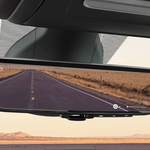Google Coming to Ram, Jeep and Chrysler Driving Experience by 2022 With Android “Ecosystem”
The modern automobile—essentially a network on wheels—has begun the transition to becoming part of the Internet of Things (IoT).
In case you thought the autonomous (AV) and electric vehicles (EV) would be a passing fad, think again.
This past April, FCA announced that HARMAN—a Samsung subsidiary and Google Technologies would develop the framework for a global connected vehicle “ecosystem”.
So what does a connected vehicle “ecosystem” mean to the average driver?
It means your infotainment system will become a more important aspect of your vehicle ownership experience. For Baby Boomers and Gen X’ers, this may not seem like such a big deal.
But for the future of the automobile industry, the millennials, connectivity will be an important aspect of vehicle ownership. Future drivers will want to drive less and interact more. Interior design has begun trending towards vehicle interiors that support autonomous operation.
Without the need for a driver, passengers will have time to connect. Enter the vehicle “ecosystem.” The initial integration of modern mobile connected and vehicle lives has already begun with recently introduced functionality of Apple CarPlay and Android Auto.
With the new environment being Android based, new apps can be downloaded and updated like any other phone app. Now mapping apps such as Waze will come already installed in your vehicle. There will no longer be the need for USB connections and specialized hubs.

The facilitation of app usage and connectivity in-vehicle has more use than entertainment.
On-board systems will locate the nearest charging station or the route that will require the least amount of battery usage. There will be automatic traffic updates per current technology, but now the information will be closer to real-time and more accurate.
Because the modern vehicle already relies on computer technology, engine information can be uploaded and analyzed. Preventative maintenance can be scheduled automatically.
The convenience and benefits will also bring other consequences. Google and by default that means advertisers will have greater access to consumers.
Google will have the capability to use your search history. Drivers can most likely expect their infotainment systems to make automatic suggestions along routes as part of advertising. All of which will probably lead to fees for apps that don’t advertise while we drive.
Whatever the final outcome, the path has been set for the future of connected driving.
![banner right]()
![banner right]()












